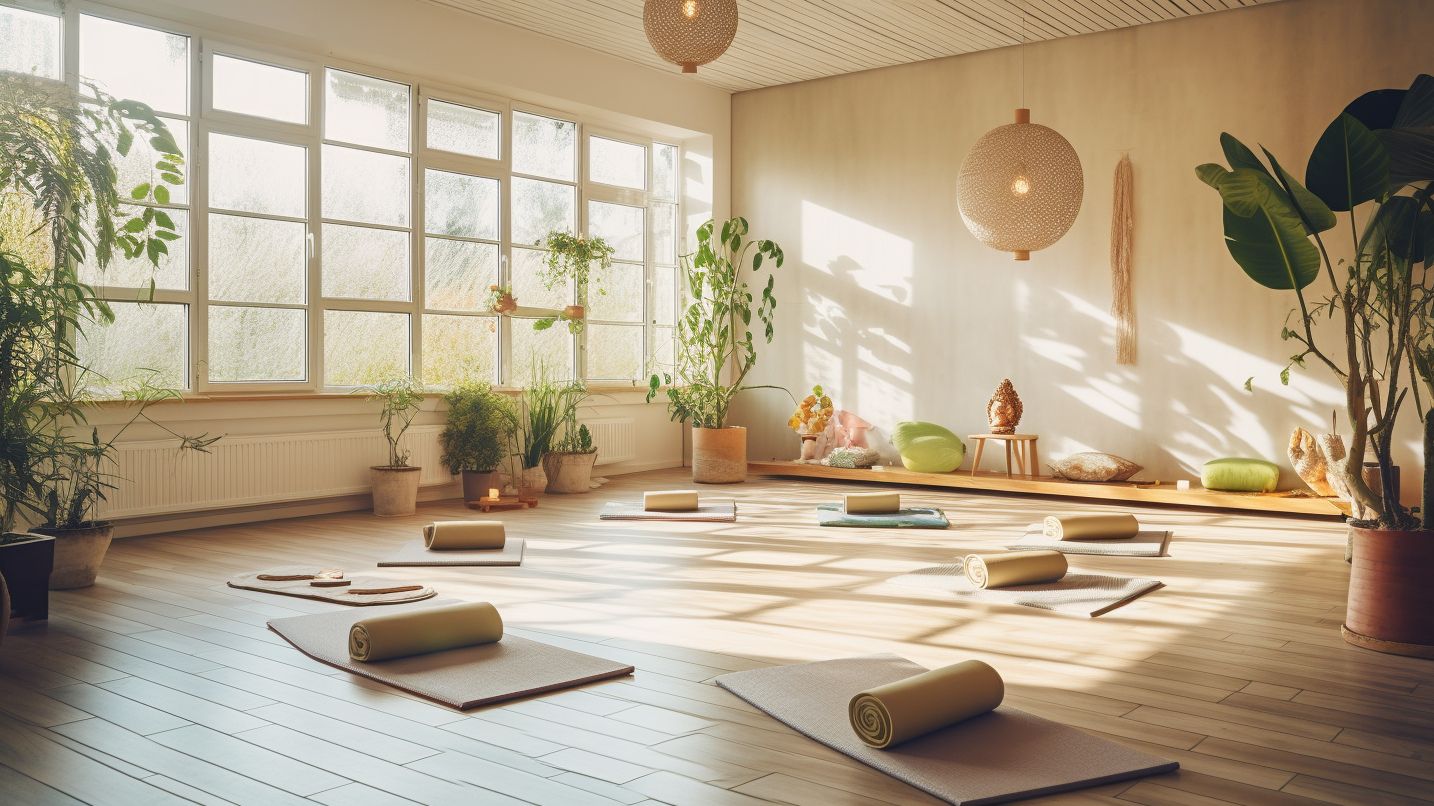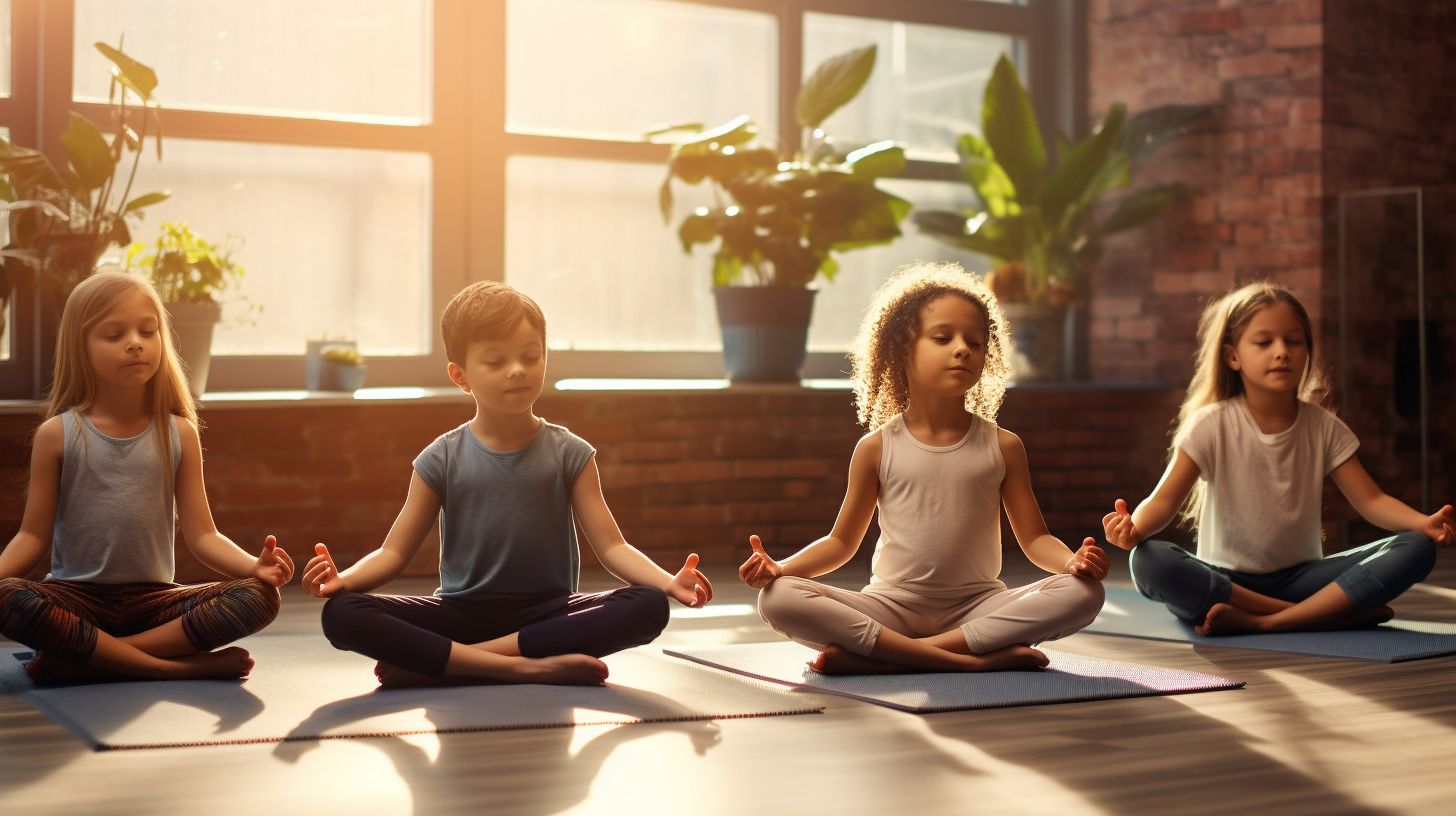Teaching yoga to children in a school classroom setting can be challenging, especially when creating engaging lesson plans that cater to their short attention spans. While the main idea of yoga is to relax your body by creating a calming effect, the problem is that kids are not naturally calm. Hence, the disconnect can be very real.
So, how can you avoid this struggle? Here’s your guide to creating a kids yoga lesson plan that is not only safe but also captures their interests.

Write a Kids Yoga Lesson Plan in 5 Steps
A proper plan is essential to ensure the success of a yoga session, especially when it comes to lesson plans, meditation, flexibility, and finding the right pose. Keep reading to discover a step-by-step plan for your next kids' yoga class.
1. Start Your Class With An Appropriate Introduction
To kick off your kids' yoga lesson, start with a friendly greeting. This helps set the mood for the entire class. As the yoga teacher, your role is to ease students into the session with lesson plans and student handouts, instead of jumping right into the main poses. Additionally, incorporating an art activity can enhance their experience.
It's also a great moment to introduce yourself and kindly ask the kids to listen to your guidance. Keep in mind that yelling doesn't work with children. Be prepared in advance so that when they enter the room, their boundless energy naturally transitions into a peaceful atmosphere.
You can do this by:
- Play calming music in the background
- Have warm lighting instead of bright colors
- Model the appropriate behavior
This sets up a cozy space for the kids, making it easy for them to catch the positive vibes around. It's also the perfect moment to go over some basic rules, like showing them where the restroom is and where they should leave their shoes, water bottles, and stuff.
You should have their yoga mats ready ahead of time so they know exactly where to put them. These little things will get you smoothly into step 2, where the real movement begins.
2. Open The Yoga Sequence Warmly
After the kids have come in and greeted their pals, it's time to kick things up a notch. We're going to chat about the best moves to get their yoga session rolling.
But before we dive into the action, it's important to get to know your class. If you've got a bunch of younger kids, say, aged 5 to 10, your plan should be a bit more kid-friendly. On the other hand, if your crew is older, above the 10-year mark, you'll want to bring a touch of maturity into your approach.
So, let's dig deeper into these two groups and find out how to tailor your plan just right for each of them.
Opening a Yoga Class for Young Children
When you've got a bunch of 5 to 10-year-olds in your class, keeping their attention can be a bit tricky. So, here's a neat idea: kick things off with a fun song. It's a great way to get all eyes on you.
And the best part? You'll find tons of kid-friendly yoga playlists with groovy tunes. While the music plays softly in the background, you can start with easy stretches on the mat before moving on to some standing exercises.
Here are a few suggestions:
- Child's pose
- Happy baby
- Table top
These poses are like warm-up moves, helping to channel the energy for the standing poses coming up next.
Opening a Yoga Class for Older Children
Now, for the older kids in your class, you can step it up a notch with some more advanced moves. One great example is the "Sun Salutation" yoga pose sequence.
This kids' yoga plan is straightforward and a fantastic way to kick off your yoga session. But keep in mind that you're still working with kids, so it's a good idea to take it a bit slower than usual.
And don't forget to keep the positivity flowing. Let the kids know you're there to lend a hand if they need any help and keep those encouraging words coming.
3. Use Creative Elements to Progress the Yoga Class
Adding some fun and creative stuff to your routine keeps the kids interested during the sessions. But here's the trick: don't get the energy level too high, or you might lose that yoga flow. It's all about finding the right balance between calm and engaging.
In the first part of your session, aim to get the kids moving to release some energy. This will make it easier to shift into the breathing exercises.
So, let's dive into three tips to jazz up your session and make it more enjoyable:
Create a Storyline
Using storytelling with poses is a cool way to keep the kids interested and help them learn and get better over time. This trick helps them remember what they're taught and improves their performance.
You don't have to do this in every session, but you can use it when it feels right. It adds an exciting and imaginative vibe to the class, making the kids feel positive and boosting your yoga teaching session.
Introduce Themes
Themes are a great way to keep the kids interested, especially when it's something they can relate to. It also encourages them to join in and share their ideas, especially when they already know a lot about the theme.
Plus, themes can help the instructor remember the session's flow and stay on track.
Here are some fun and simple themes for your kids' yoga lesson plans:
- Animals: Have the kids do yoga poses that imitate animal movements.
- Animal ABCs: This is a neat way to learn with yoga and builds on the animal theme. You can give the kids handouts to write down their ABCs and put an animal in front of each letter. Then, mimic their movements as yoga poses.
- Seasons/Weather: This theme makes for a fun session where you can show how a tree's life changes in different seasons through yoga poses. For example, you can demonstrate a thunderstorm with a lightning bolt pose or imitate a strong wind with the star pose.
- Transportation: There are plenty of poses related to transportation, like boats, airplanes, rockets, submarines, and more.

Plan a Yoga Game
Here's another cool trick to make your yoga session more fun: plan a yoga game. One fantastic choice is "Musical Statues," which can be a big help when teaching yoga poses to little ones.
Also, you might already know that there are different styles of yoga. While you won't use the complex ones for kids, you can help them progress by introducing poses from various yoga styles.
For example, there's a style called yin yoga that involves longer pauses than other types. Turning these movements into a game makes it easier for the kids to learn and remember them.
Take the Cobra pose, for instance, which is from yin yoga. It's a good fit for children because it's done on the floor and doesn't require much effort.
Here's a fun twist: play some relaxing music and pause it when you want your class to hold a pose. This way, they'll know when to keep their posture and when to relax, just like in the game of "Musical Statues."
4. It’s Time for Meditation
Now, as you move into the second part of your kids' yoga class, it's time to dial down the excitement and get ready for some calming practices.
Helping kids settle down when they're super excited can be a bit challenging. The best approach here is to let them ease into a calmer state at their own pace rather than rushing them through the process.
Here's an example of how you can let your students know about this change in the session:
"Alright, let's slow down and find a comfy spot on our mats. You can lie down however feels best for you, but I like to lay on my back, looking up at the ceiling. We're going to do some breathing exercises. These will help us relax and get ready for a peaceful time."
By mentioning bedtime, you're connecting with a familiar feeling, encouraging them to bring their energy levels down and find a more serene state to begin the meditation exercises.
When it comes to a breathing exercise routine, remember a couple of important things:
- Show them how to do it with a demonstration.
- Explain each step as you go along.
- Ask if they have any questions or need help – it's all about making them feel comfortable.
5. Closing The Kids Yoga Lesson Plan Effectively
A kids' yoga session is like taking them on an emotional journey, giving them a whole new experience that stirs up all sorts of feelings.
That's why ending the session on a good note is so important. It avoids any confusion that could come from a sudden ending. Chanting "om shanti, shanti, shanti" is a nice way to wrap things up. It means peace, peace, peace.
This not only leaves a thoughtful touch at the end of the class but also gives the kids a positive mantra to remember. They can share it with their family and friends, making it a lovely way to finish their yoga journey.
Resources for Kids Yoga Lesson Plan
Videos: Kids yoga Youtube video channel
Blogs and stories: Kids mindfullness stories
Admin: Class Booking System for afterschool programs, holiday camps and kids activities
Bottom Line
Managing kids and understanding their sentiments are two things that you can never perfect but learn with time.
With this step-by-step guide, you can create routine or seasonal kids' yoga lesson plans constructively and confidently.
